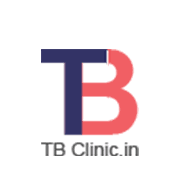- TBM is the fifth most common form of extra-pulmonary TB.
- It accounts for nearly 5% cases of all extra-pulmonary TB and around 1% of all reported cases of TB
- The fallout, the symptoms, the signs of tubercular meningitis are less due to the infection itself but more due to immunological response provoked by the inflammatory reaction to the infection.
-
Mycobacterium tuberculosis infects lungs by droplet inhalation
- The localized infection increases and spreads to regional lymph nodes.
- At this time bacteraemia is present sending tubercle bacilli to other organs.
- Bacilli reach meninges – brain parenchyma.
- In meninges it makes small foci of metastatic caseous lesions.
- These are called Rich foci.
-
Rich foci increase in size.
- It ruptures into the subarachnoid space.
- Tubercles rupturing in subarachnoid space cause meningitis.
- Tubercles deeper in the brain or spinal cord cause abscesses.
- Abscesses can rupture in brain ventricle but Rich focus does not.
-
Pathophysiological features of TBM.
- The exudate produced due to the infection infiltrates the blood vessels of the meninges, giving rise to inflammation or obstruction as also to infarction.
- Basal meningitis accounts for dysfunction of cranial nerves (CNs) III, VI, and VII.
- This leads to obstructive hydrocephalus from obstruction of basilar cisterns.
- Subsequent neurological pathology is due to the 3 phases of adhesions, obliterative vasculitis and encephalitis.
- Formation of tuberculomas may become big but still not produce meningitis
- If host resistance is poor it results in cerebritis or abscess formation
- TBM may show a very acute presentation.
- Sometimes symptoms are due to cranial nerve deficits
- When course is slow, it causes headache
- Meningismus
- Altered mental status
- Vomiting
- Photophobia
- Fever
- Cranial Nerves VI is most commonly affected, followed by Cranial Nerves III, IV, VII, less commonly the CNs II, VIII, X, XI, and XII
- The duration of symptoms may range from 1 day to 9 months
- Tremor is seen during course of TBM
- Sometimes myoclonus and cerebellar dysfunction are observed.
-
Spinal meninges gets involved due to infection from intracranial meningitis
- Due to primary spinal meningitis
- Tubercular focus ruptures into the subarachnoid or transdural space
- Granulomatous exudate presses on spinal cord
- Vasculitis results in ischemic spinal cord infarction
- Most often a cold abscess develops
-
Progress of disease leads to increasing decalcification and erosion
- Results gradual collapse of bone and destruction of intervertebral disks
- Giving rise to kyphosis
- A big diagnostic problem. To be suspicious is best strategy
- To be strongly considered with the clinical picture of meningoencephalitides
- Diagnostic confusions due to other forms of meningoencephalitides
- Differentiate between acute and sub-acute meningitis.
- Also suspect viral infections.
- If leg is involved, limping is the first complaint.
- Cerebral abscess is also quite likely
- Diagnosis cannot be either excluded or diagnosed due to clinical findings alone
- Tuberculin Test gives very limited answer
- Spinal tap gives significant diagnostic confirmation
- CT scan imaging of the Brain is not specific but helps to monitor complications
(Prompt treatment is a must; Missed/delayed diagnoses can lead to death)
- Anti-tubercular therapy is best with isoniazid, Rifampin and pyrazinamide, the fourth drug is left to local choice
- The use of corticosteroids is in doubt: but they have been employed in cases of increased Intra-Ventricular pressure, due to change in consciousness, due to focal neurological findings, due to spinal block or due to tuberculous encephalopathy
- Ventricular drain shunt advised in obstructive hydrocephalus and those showing neurological deterioration
-
Duration of Treatment
- The optimal duration of antimicrobial therapy is unclear.
- TBM is very critical disease
- Has fatal outcome, has permanent sequelae
- Has fatal outcome, has permanent sequelae
- Requires rapid diagnosis and treatment
-
Prediction of prognosis of TBM is very difficult.
- Because of variable course
- Diversity of underlying pathology
- Variation of host immunity.
- Virulence of Mycobacterium tuberculosis
- Prognosis is related directly to the clinical stage at diagnosis.
-
Most significant variables for predicting outcome in TBM is-
- Age
- Stage of disease
- Focal weakness
- CN palsy
- Hydrocephalus
- Children with advanced condition and neurological complications have poor outcomes.
- Visual impairment happens very often, leads to severe disability or death.
- Hydrocephalus along with positive culture leads to poorer outcome
- When HIV is coexisting there is encephalopathy and lowered immunity leading to severe clinical and neuroradiological involvement
- [shw_list_service icon="fa fa-check"]When HIV is coexisting there is encephalopathy and lowered immunity leading to severe clinical and neuroradiological involvement

